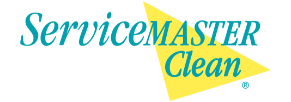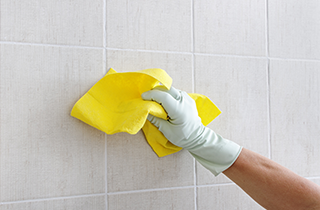Why Manual Cleaning and Disinfection Are Important
Proper cleaning and disinfection processes are necessary to keep facilities safe for workers and customers. From food processing plants to office buildings to hospitals and operating rooms—extensive care must be taken to ensure complete disinfection for the safety of patients, employees, and other individuals within commercial properties.
While the importance of disinfection is clear, the rise of dangerous pathogens, such as SARS-CoV-2 the virus that causes COVID-19, has amplified the need to practice the most effective methods to keep people safe. What is this most effective process to clean and disinfect facilities, hospitals, and other workspaces? Automation is often preferred by businesses due to how it streamlines the cleaning process, but manual cleaning and disinfection is the favored method for companies who value cleanliness, safety, and thorough elimination of pathogens.
Benefits of Manual Cleaning and Disinfection
Manual cleaning and disinfection processes provide workspaces advantages that other types of cleaning do not. Some of these benefits include:
- Removing dirt, dust, and other soil to effectively disinfect the surfaces underneath. There’s a big reason washing your hands is preferred to using hand sanitizer: friction. The same applies to surfaces. Cleaning through a contactless process does not remove the soil that harbors dangerous pathogens. Friction from manual cleaning physically removes troublesome soils on surfaces, allowing for proper disinfectant application and effectiveness.
- Thorough disinfection of sensitive machinery or instruments. Machinery or sensitive instruments may have unique designs that make proper disinfection difficult. Manually applying disinfectant allows for proper care and attention to surfaces that may contain crevices or hard-to-reach areas that would otherwise be neglected by alternative methods.
- Time and attention to areas that may be overlooked. Due to large spaces that are often found in commercial properties, some cleaning teams may use methods that cover a wider area to save on time. In the long run, though, you’ll find that you’re spending more time cleaning and risk a potential outbreak. Manual cleaning and disinfection allow for care and attention to be applied for each surface.
The advantages of manual cleaning and disinfection are clear, but there are some drawbacks worth mentioning. Potential cross-contamination may happen during the cleaning process, most notably if cleaning staff are not fully trained on the correct procedures for supplies, tools, and equipment and how to safely condition them for use from one room to another. In a hospital setting, pathogens can continue to survive if not properly disinfected, causing a host of issues and potentially cross-contaminating different rooms and affecting patients. This is a greater problem for medical facilities who manage patients at higher risk for infection, including COVID-19.
The ServiceMaster Clean cleaning experts are trained and certified for hospital-grade cleaning (including CSCT training) and are dedicated to taking extra care and attention to ensure that they are thoroughly disinfecting all surface areas using the appropriate steps to prevent cross-contamination in facilities.
How Does Manual Disinfection Compare to Other Application Types?
When compared to other types of cleaning applications, manual disinfection allows cleaning teams to better target trouble areas. However, noting other popular disinfection methods allows for a greater understanding of its effectivity in comparison:
Spray disinfectants are a popular choice among commercial properties that wish to cover a wider area within a facility. While the spray disinfection method is quick and easy to apply, it requires more disinfection products to efficiently cover the intended area. Additionally, failing to properly use the spray equipment or remove soil from surfaces may leave some areas uncovered, potentially causing inadvertent spread of infections, such as COVID-19.
Foam disinfection is useful for those situations where wider coverage of surfaces may be needed. This is the preferred method for a variety of industrial operations, due to the disinfectant foam expanding upon touching the surface and providing a visual marker of what areas have been addressed. While useful in machinery settings, it does not provide the same level of control as manual disinfection within other customer-facing industries.
Steam disinfection works well to kill pathogens from surfaces because of the heat applied on surfaces. The main drawbacks for steam disinfection come from the high temperatures needed to apply the disinfectants, potentially causing damage to sensitive surfaces or equipment in high-touch areas. This method is not recommended for medical facilities or other industries that work with customers, due to the potential for injury and the potential for damage on sensitive equipment.
Manual disinfection provides a clearer advantage among other disinfection methods, while also providing greater control, more attention to detail, and specific application of disinfectants to all areas, regardless of industry.
Trust ServiceMaster Clean for your Disinfection Needs
For over 65 years, our ServiceMaster Clean locations have supported a wide variety of industries from healthcare facilities to food processing plants to keep staff and customers safe from dangerous bacteria, viruses, mold, and other pathogens. Our experience allows our team to provide an unrivaled attention to detail—creating a healthy space and a first line of defense against infection.
Our teams are local and have been rigorously trained with our national expertise to keep your business clean. As a leader in cleaning and disinfection services, you can feel confident that we will understand your unique needs, all while you are supporting a local business. Find your nearest ServiceMaster Clean location and get started today.










